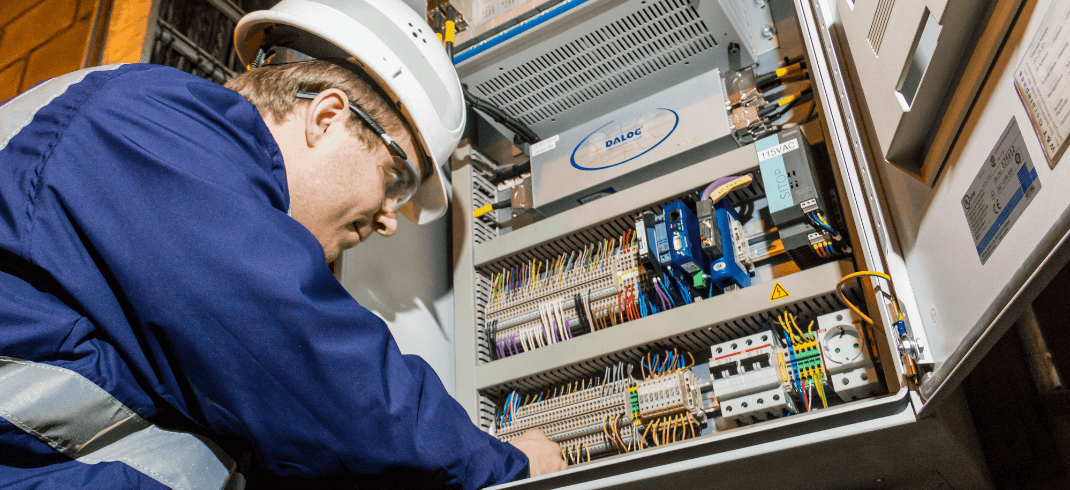Contingency Best Practices for Unplanned Downtime
Unplanned downtime is when equipment or machinery unexpectedly stops working, leading to significant business losses. These failures include lost production time, decreased revenue, and dissatisfied customers.
According to Siemens, unplanned downtime costs Fortune Global 500 companies 11% of their yearly turnover – almost $1.5tn. Another study highlights how oil and gas companies experience, on average, $49 million annually in financial impacts due to unplanned downtime, with the worst performers having a negative financial impact of $88 million.
Regarding the time lost from unplanned downtime, Due states that the average manufacturer deals with 800 hours of downtime annually. Moreover, 82% of companies have experienced at least one unplanned downtime outage over the past three years, with the average number of outages being two.
That's why contingency planning is so important. It helps businesses prepare for the unexpected and minimize the impact of downtime.
A contingency plan is a proactive strategy that outlines how a business will respond to unforeseen events, like equipment failures or power outages, to get operations back up and running as quickly as possible.
Having a contingency plan in place can reduce the time and cost of downtime while also improving employee safety and morale. For example, operators using a predictive, data-based approach experience 36% less unplanned downtime than those with a reactive approach.
- Understanding the Causes of Unplanned Downtime
- Best Practices for Contingency Planning
- Using Data to Improve Contingency Planning
1. Understanding the Causes of Unplanned Downtime
Unplanned downtime can be caused by various factors, such as:
- Equipment failure due to worn-out components, inadequate maintenance, or manufacturing defects. A study found that 70% of companies are unaware of when equipment is due for maintenance, upgrade, or replacement.
- Power outages due to natural disasters, equipment failures, or grid overloads.
- Human error resulting from lack of training, negligence, or accidental damage. According to Business Wire, human error causes 23% of unplanned downtime in manufacturing.
Regardless of the cause, the impact of downtime on businesses can be severe. Production time is lost, leading to missed deadlines and delivery delays. Revenue is reduced, as products cannot be made and sold during downtime. This can also damage customer satisfaction, as they may experience delays in receiving products or services. In addition to these immediate losses, there can be long-term consequences, such as reputational damage and loss of future business opportunities.
2. Best Practices for Contingency Planning
Developing a contingency plan is crucial for minimizing the impact of unplanned downtime. Here are some best practices for creating an effective one:
Develop a plan: First things first - start by assessing the risks and identifying potential downtime events. Based on this assessment, develop a contingency plan that outlines the steps to take in case of downtime.
Here's what a contingency plan could look like. You can start from here and develop it to work better for your company:
- Quickly assess the situation and identify the cause of the downtime.
- Activate the response team with designated roles and responsibilities.
- Notify stakeholders and customers of the downtime and estimated time to resolution.
- Begin troubleshooting and attempting to resolve the issue.
- If necessary, begin ordering critical spare parts and arranging for their delivery.
- Communicate updates to stakeholders and customers throughout the resolution process.
- Resume normal operations as soon as possible.
- Identify the cause of the downtime and implement measures to prevent similar incidents.
Create a response team of employees responsible for executing the contingency plan. Each team member should have a specific role and responsibilities, such as notifying stakeholders, assessing the damage, and coordinating repairs.
Train employees on the contingency plan and their roles in executing it, even if you have a response team. This can help ensure that everyone knows what to do in case of downtime and can help minimize confusion and delays.
Establish communication protocols to quickly notify stakeholders of the downtime event and the response plan. Ensure all stakeholders, including employees, customers, and suppliers, are informed about the situation.
Identify critical spare parts and maintain an inventory. Ensure the inventory is updated regularly and spare parts are readily available.
Test and refine the contingency plan by conducting simulations and drills. Use the data from these exercises to refine the plan and improve response times.
Have a backup power source, such as a generator, to help your company maintain critical equipment during an outage and prevent extended downtime.
Implement remote monitoring to help you identify potential issues before they become downtime events and respond more quickly.
DAWi, our wireless vibration sensor, is ideal for use in remote locations, reliable, cost-effective, and easy to install. Increase equipment lifespan by detecting problems early and have a clear understanding of your assets' status with real-time condition indicators!
Document everything related to downtime events, including the cause, duration, and response. It can help your business identify areas for improvement and refine the contingency plan over time.
Consider outsourcing maintenance to a third-party provider to help your company reduce the burden on internal resources and ensure that experts with specialized knowledge and tools perform maintenance.
Conduct a risk assessment to help your business identify potential sources of downtime and develop strategies to mitigate those risks. This can help prioritize investments in contingency planning and improve the plan's overall effectiveness.
Use redundancy in critical systems or equipment to help minimize the impact of equipment failure or other issues. For example, backup servers or network connections can ensure vital systems remain operational even if one fails.
Prioritize preventive maintenance to help identify and address potential issues before they become downtime events. This can reduce the frequency and duration of downtime and improve the overall reliability of equipment and systems.
Learn how to implement a dependable predictive maintenance strategy that will optimize plant operations, minimize downtime, and improve efficiency, all while cutting down on maintenance costs.
Download our free eBook: The Reliability Manager's Plan
Regularly review and update the contingency plan to ensure it remains relevant and effective. This can help identify changes in equipment, processes, or risks that may require adjustments to the plan.
3. Using Data to Improve Contingency Planning
Data is crucial in improving contingency planning and response during downtime events. By leveraging data from condition monitoring and predictive maintenance, your company can improve the accuracy and effectiveness of its contingency plan.
Other businesses are already doing it! More than three-quarters of firms collect some basic data from their machines. The ones reaping the most significant rewards implement IoT platforms that let them integrate and use data from multiple sources.
Here are some ways that you could also use data to improve contingency planning:
Analyze historical data: Identify trends and patterns in downtime causes and durations. This can help you develop a better understanding of the factors that contribute to downtime and identify areas for improvement.
Use real-time data: During downtime, this data can help you make informed decisions. For example, data from vibration sensors can indicate the severity of equipment damage, and data from temperature sensors can help identify the root cause of the issue.
Improve response times: You can do this by analyzing data from previous downtime events. For example, you can identify common issues that cause repair delays and develop strategies to mitigate them.
Optimize spare parts inventory: Data from predictive maintenance can help you optimize your spare parts inventory. By analyzing historical data and predicting when you will need maintenance, you can ensure that the fitting spare parts are available when required.
Leveraging technology such as condition monitoring and predictive maintenance can help prevent downtime by detecting issues early and scheduling maintenance proactively. Two-thirds of firms are now doing condition-based maintenance, and a third have dedicated predictive maintenance teams, so it's important not to remain behind.
We help hundreds of plants worldwide minimize downtime and optimize the life cycle of their machines by fusing state-of-the-art predictive maintenance technology with the engineering expertise of our analysts to deliver second-to-none condition-based online monitoring services.
Take a proactive approach to equipment maintenance. Request an online reliability assessment today!







